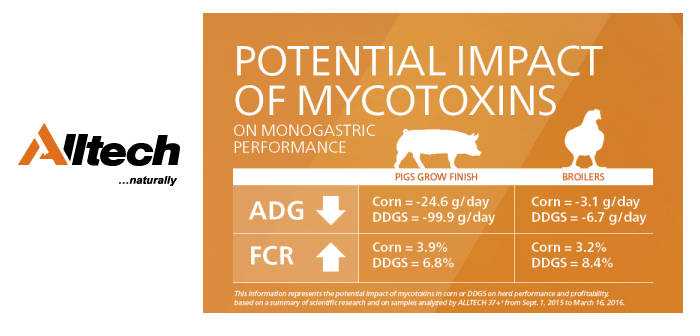Poultry farmers in the US have been alerted to the danger that distiller’s dried grains (DDGs), derived as a by-product of ethanol production, may act as a “door” to mycotoxin exposure.
The alert, issued by the global biotechnology company, Alltech, follows the release of its 2015 North America harvest analysis, with the company saying that since the harvest results were released, some poultry and pork producers have noticed a new source for mycotoxin contamination, linked to ethanol-derived DDGs.
“The problem with DDGs is that any component that is not used for ethanol will be concentrated, just like the fibre and the protein, and this includes mycotoxins,” said Alltech’s mycotoxin management team nutritionist, Dr. Max Hawkins. “In fact, mycotoxins concentrate up to three times more in DDGs than in grains.”
While commenting that, over time, mycotoxins can have significant impact on feed intake, weight gain, gut health, immune response and feed conversion rate (FCR), Dr Hawkins advised poultry and pig producers to also stay vigilant about grain storage.
“Further analysis has shown that, since harvest, this feedstuff (DDGs) has increased from a low to moderate mycotoxin risk as grain storage time increases,” he said, suggesting that producers implement a quality control programme to monitor the toxic content of DDGs and to make sure that the incoming supply of DDGs has manageable levels of contamination.
The company also said that another common approach to dealing with mycotoxins in DDGs is blending, which involves taking a high toxin source of DDGs and mixing it with another supply that has a lower level of contamination.
Dr Hawkins’ final point, however, was that the animal itself remains the best indicator of a mycotoxin presence.
“If the animal is not performing to its fullest or unexplained symptoms persist,” he said, “consider the nutrient quality of the DDGs and the role that a mycotoxin may be playing.”


